OCZ Vertex 4 Review (256GB, 512GB)
by Anand Lal Shimpi on April 4, 2012 9:00 AM ESTAnandTech Storage Bench 2011 - Light Workload
Our new light workload actually has more write operations than read operations. The split is as follows: 372,630 reads and 459,709 writes. The relatively close read/write ratio does better mimic a typical light workload (although even lighter workloads would be far more read centric).
The I/O breakdown is similar to the heavy workload at small IOs, however you'll notice that there are far fewer large IO transfers:
| AnandTech Storage Bench 2011 - Light Workload IO Breakdown | ||||
| IO Size | % of Total | |||
| 4KB | 27% | |||
| 16KB | 8% | |||
| 32KB | 6% | |||
| 64KB | 5% | |||
Our light workload is far more representative of a mainstream client workload (read heavy) and this is where the Vertex 4's sequential read performance hurts it the most. The Samsung SSD 830 ends up being considerably faster here. Once again, if we look at the breakdown of reads and writes we see why:
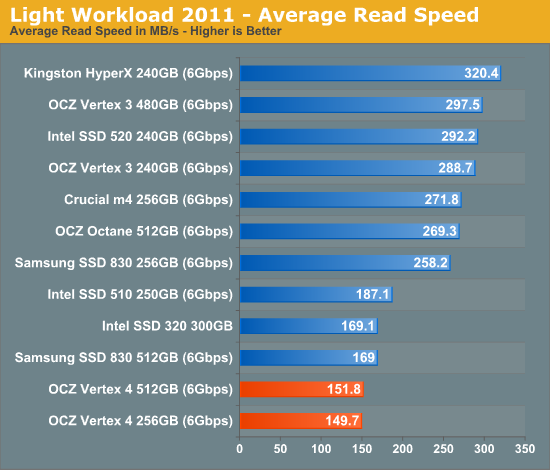
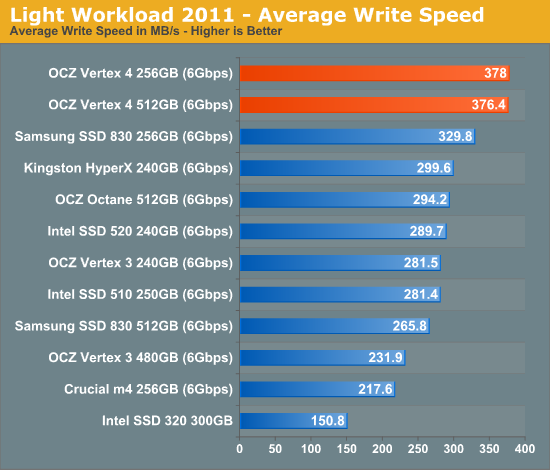
Read performance is around half of the best performers, while write speed is around 30% better. The combination results in competitive but not class-leading performance.If OCZ is able to deliver, at a minimum, Octane levels of read performance, the Vertex 4 should find itself much higher in the overall charts.
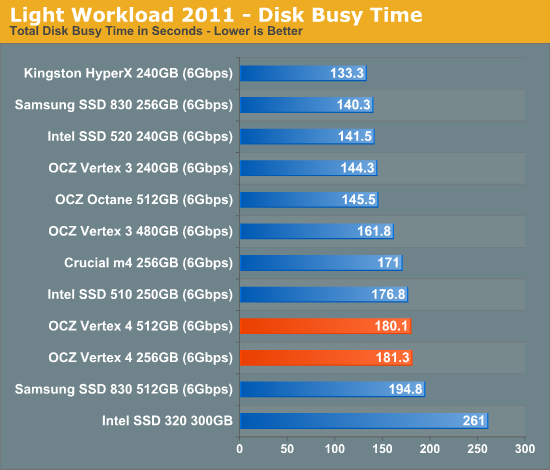
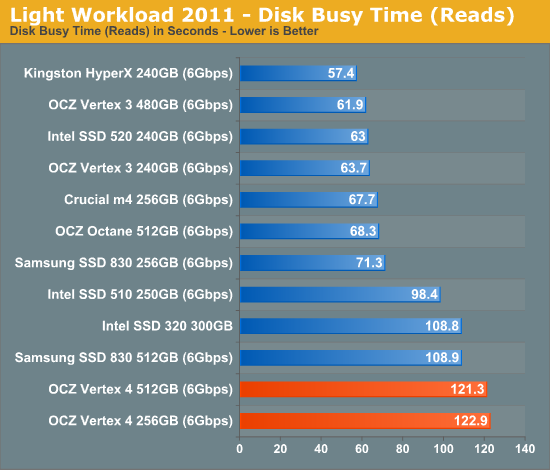



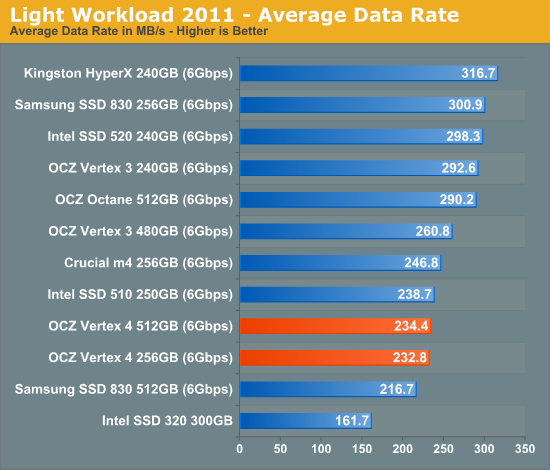








127 Comments
View All Comments
Coup27 - Friday, April 6, 2012 - link
For the uneducated, what is a referral link?ginman - Wednesday, April 4, 2012 - link
I have been reading articles here for some number of years now and i like reading these. But i notice it's normally the same players, Intel, OCZ, Samsung, Crucial ect... I was wondering if there has been any benches run on the Mushkin SSD's, pricewise; they seem to be setting a new trend.InsaneScientist - Wednesday, April 4, 2012 - link
What's up with the connector on the opposite end of the board from the SATA connector? It looks like the same pinout as SATA, but smaller.Did I miss an interface specification?
And, more importantly: what's it for? 2 interfaces on one drive?
pc_void - Wednesday, April 4, 2012 - link
More like for sale ON amazon.Amazon itself isn't selling it atm.
And the prices are stupid.
sfroom - Wednesday, April 4, 2012 - link
I just reread the Samsung 830 review based on your comment in the last paragraph, but could barely find any mention of Mac use in the review. Why is the Samsung 830 your SSD of choice for Mac users?Additionally, I'd LOVE to see an article comparing the current batch of SSD's on the mac platform. Thanks!
ectoplasmosis - Wednesday, April 4, 2012 - link
I second this.ckryan - Wednesday, April 4, 2012 - link
The 830 pretty much works trouble free in OSX, with or without TRIM. It's garbage collection on post-CXM01B1Q FW is good, and performance got a bump with it too.Samplex - Thursday, April 5, 2012 - link
Why is this: "If you're buying an SSD today, our standarding recommendation (particularly for Mac users) is Samsung's SSD 830."Why is the Samsung better for mac users?
7Enigma - Thursday, April 5, 2012 - link
See here:http://www.anandtech.com/show/4863/the-samsung-ssd...
But as ckryan said above it comes down to garbage collection and TRIM support (or lackthereof).
iceman98343 - Thursday, April 5, 2012 - link
You can purchase the drive at amazon now - http://goo.gl/p8BSK